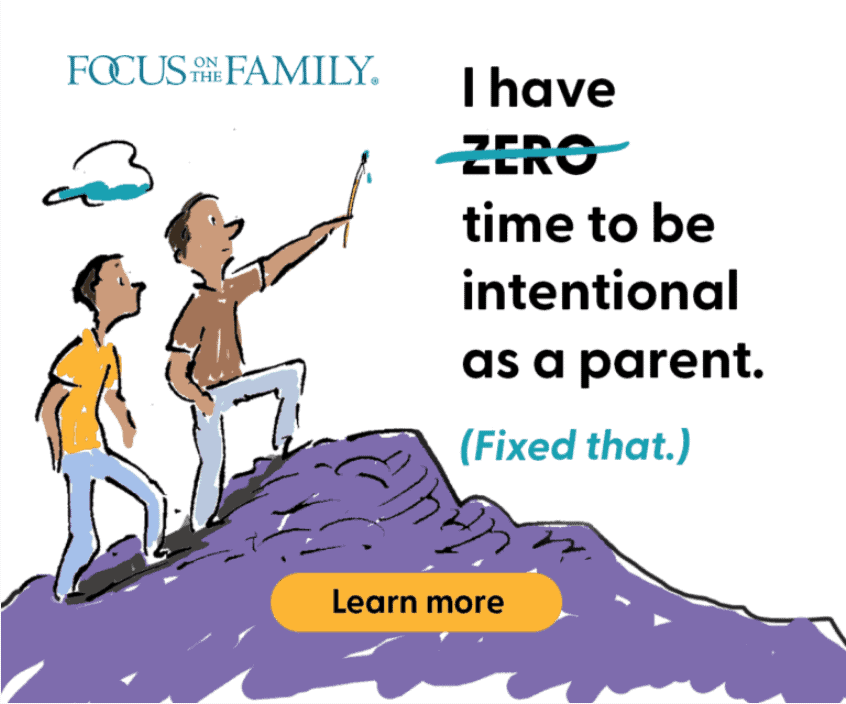I will never forget the night my wife, Angie, and I welcomed siblings from the foster care system into our home. We’d been fostering for six years. Though we already had eight children — both fosters and ours — we gladly welcomed the 11-year-old girl and her 6-year-old brother. We knew that, like our other children, we could deepen our relationship with each of them through the five senses of connection.
Angie was busy getting the 11-year-old settled in and helping our children get ready for bed. I sat in the living room with the 6-year-old. At one point, he laid his head on my lap and looked up at me with deep brown eyes. He said, “I love you, Daddy.”
I was surprised but somehow understood from where this impromptu declaration of love was coming. He knew I wasn’t his daddy. I also wouldn’t want him to continue addressing me that way because that wasn’t my role in his life. But at that moment, he needed someone to represent security, stability, provision, and protection. He desperately needed the things that, as parents, we often take for granted. He was expressing his desire to connect with me on a deeper, more personal level.
As a foster parent, I would have this child only a brief time — between six and 18 months. Then he would return to his family or be adopted. Our foster relationship would be brief. We understood that although we couldn’t control the amount of time we had with these children, the most important factor was what we did with the time we had. That is true in the relationships we have with all the children in our home. Time with them is not a guarantee.
The Five Senses of Connection
As parents of now 11 children — six adopted through foster care — and having been the foster parents of more than 18 kids, we’ve learned that one of the best ways we can intentionally create closer bonds and a positive foster relationship with these children is through the power of our five senses.
Connect Through Sight
Sight is the first of the five senses. Recently, Angie and I surprised the kids with a trip to the beach and dinner, followed by way too much ice cream. As most parents do, we captured many special memories using our smartphone cameras. But then we ordered copies of our favorite pictures, bought inexpensive albums, added each child’s name to an album, and presented it to that child. As time went by, the kids returned again and again to those albums.
Pictures have a wonderful way of connecting us to family and reminding us of our significance. Many of us take photos on our phones. However, those shots stay in our digital galleries, never to be enjoyed in a tangible way. Children need those simple visual reminders that Mom and Dad love them and that they belong and are special.
Don’t wait for big events. Capture the everyday, mundane occurrences, print the photos, and drop them into an album. On those days when your kids have rough emotional moments, pull out the album and remember the good experiences they’ve had with you.
Connect Through Touch
In our work training churches in the foster care ministry, Angie and I talk about how children in foster care who experience an absence of affectionate touch might have higher stress levels or detach from caregivers. But that’s true of all children. They need positive, gentle touches from us. For example, brushing a child’s hair, offering a hug or a back rub, or even just squeezing a shoulder in passing. These casual touches not only help kids grow into more balanced, healthy individuals, but they also help them attach more securely to us.
My wife and I use positive touch in our nighttime routines, so no one is forgotten — hugs, kisses, back rubs. Our 4-year-old always requests Mom to tuck her in. So every night, Angie touches each facial feature and tells it good night. “Good night, ear. Good night, other ear. . . .” She ends with, “Good night, nose,” a good-night kiss, and a good-night prayer. If Angie goes out of order or forgets a feature, our daughter insists they start over.
It’s important to show our children they’re loved through healthy touch. Feeling the comfort of our touch also reminds them that our almighty, loving, and grace-giving Father loves them and notices them.

Connect Through Sound
One day I was plucking away at our piano. I wrote a song while thinking about a toddler we had adopted. “With a name like Penelope, who could ever be mad at me? I don’t know! Sometimes she laughs, and sometimes she cries, sometimes she jumps up really high. But with a name like Penelope, who could ever be mad at me? I don’t know.” She loved it — and all our children wanted me to write a song about them. Just hearing the tune and the words filled them with delight.
We all know the importance of telling our children we love and value them. We also know how important it is to read aloud to them, ask about their lives, and listen to what they say. Additionally, music can build powerful bonds with people. Or, it can even evoke memories of a particular time or place in our lives. God uses music to show us how much He loves us. “He will exult over you with loud singing” (Zephaniah 3:17).
You may not be musically inclined, but songs you sing in church, in the car, and in your home, all make strong connections in the family. And those connections go even deeper as we sing about Jesus and His love for us. Even putting Scripture to music can infuse our children with the message of how valued they are. They will carry these childhood songs into adulthood and connect them to a time, place, people, and the love of God.
Connect Through Taste
Three of our children wanted to cook a meal from start to finish by themselves. Angie and I thought they would pick something easy and familiar. Instead, they chose something our family had never cooked —curried chicken and rice. That was the favorite meal our daughter enjoyed with her family before she joined our foster home.
Most of us can think back to our childhoods and remember that special meal or dish someone made for us. For our daughter, that curried chicken and rice dish not only tasted delicious, but it also connected her to a memory and a relationship with her biological family. We wanted that same experience for our kids.
Dinner that night made Angie and me think differently about the way we cook. When we provide good, nutritious meals to our children, we give them joy through taste, but we also provide them with memories and a connection to us. After that experience, we became more intentional about building food traditions and enjoying the times we eat together.
God also uses taste in our relationship with Him. His Word tells us, “Taste and see that the Lord is good!” (Psalm 34:8). That’s the relational experience we want our children to take with them as they leave our family and start their own lives.
Connect Through Smell
“Daddy, you smell good,” one of my kids told me. As children have come through our home, they are attracted to the perfumes and colognes we have in our bathroom. Angie and I pray that whenever our foster children smell perfume, cologne, or other aromas, it will remind them of their connection to our family.
The children we care for have all had our “scent” rubbed off on them both physically and spiritually (2 Corinthians 2:15). In addition to the physical aromas, our children receive spiritual scents. Learning to give thanks for their food at the table and quoting Scripture they have committed to memory are spiritual scents that also will be part of them as they grow.
Smell has the power to connect us to memory. It’s often in the everyday activities that we do with children — such as playing together on a fresh-cut lawn — that memories are built, and sensory experiences are created in our foster relationships.
Stop. Think. Be Sensitive.
An important thing to remember is that any of the five senses can generate powerful responses in children within foster care. These positive and negative responses may cause them to have difficulty managing their emotions. Be especially careful with smells, physical touch of any kind, and anything that goes into their mouths (including food). These can be emotional triggers.
Connect with children on their terms, not yours. Always give them the option to refuse the connection and never force it. When they refuse, don’t take it personally.
A sensory-processing assessment by a trained occupational therapist may help you understand how your child from foster care processes sensory stimuli. They can also give you further ideas on how to use the five senses to connect and have a healthy foster relationship with your child.
The Five Senses Show Our Children They Are Loved
Welcoming foster children into our home has caused Angie and me to work harder at building a connection with our kids and showing them they have value in God’s eyes. We want all our children — those still in the foster care system, those we’ve foster-adopted, and our biological kids — to know how much we love and treasure them and how much their heavenly Father does as well. That’s why we intentionally use each of the five senses to create sensory experiences that let them know we care. Putting that effort into our foster relationships has been something that makes all the difference for these kids.



















